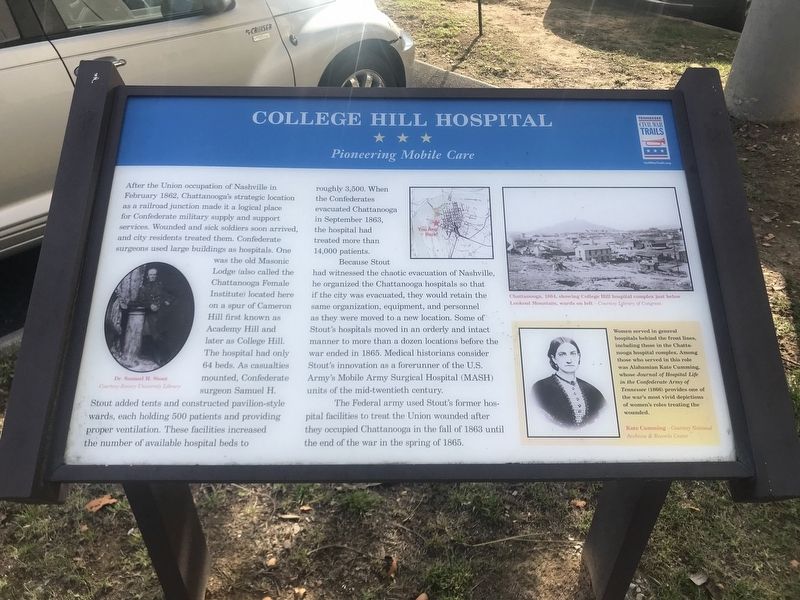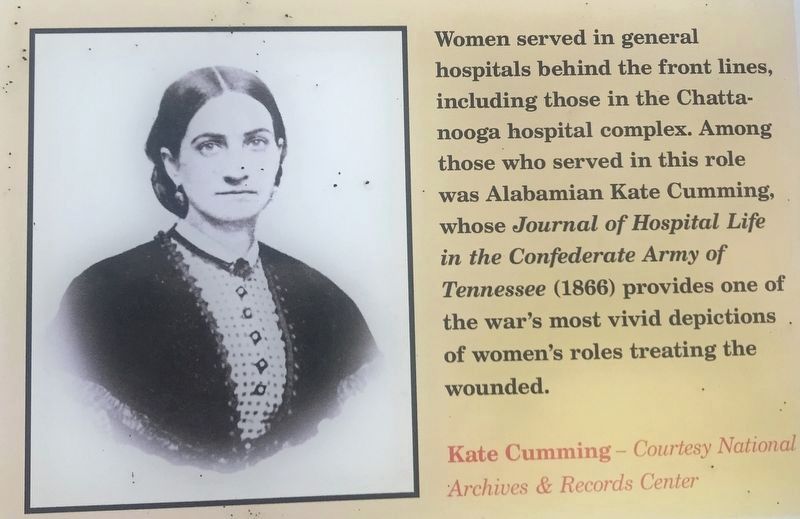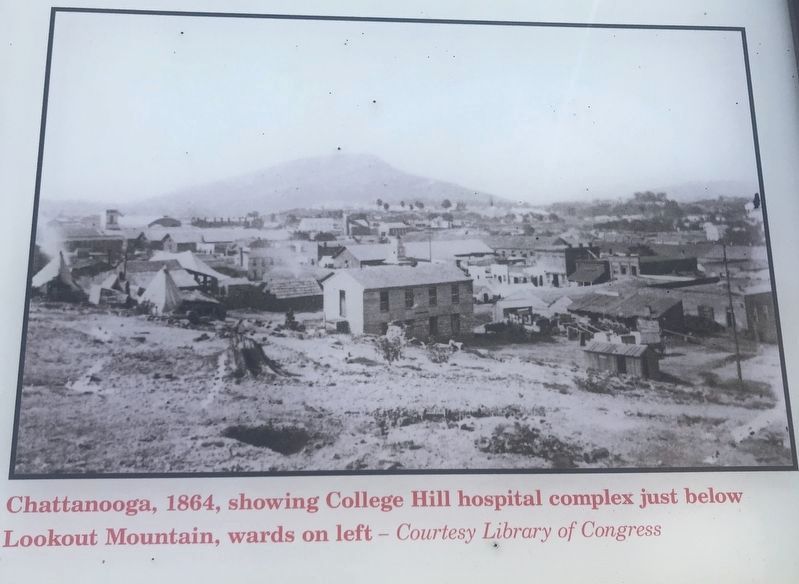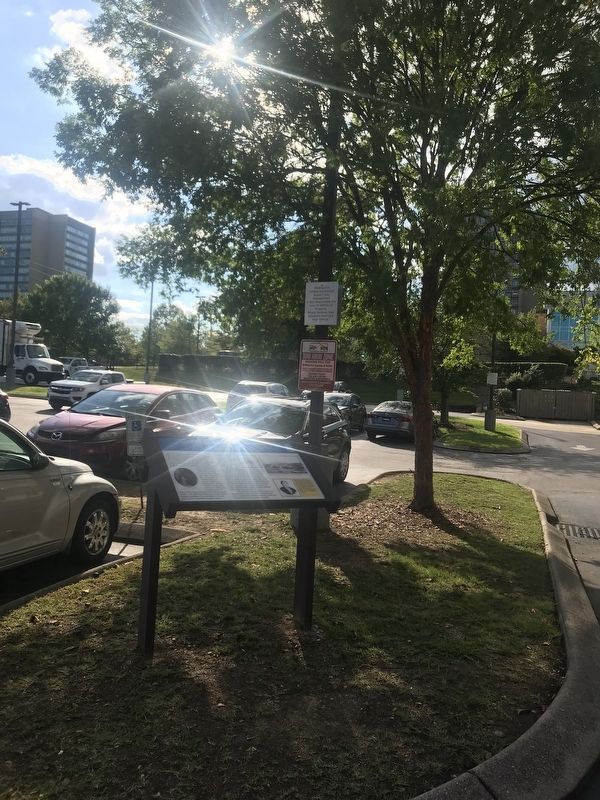Chattanooga in Hamilton County, Tennessee — The American South (East South Central)
College Hill Hospital
Pioneering Mobile Care
Because Stout had witnessed the chaotic evacuation of Nashville, he organized the Chattanooga hospitals so that if the city was evacuated, they would retain the same organization, equipment, and personnel as they were moved to a new location. Some of Stout's hospitals moved in an orderly and intact manner to more than a dozen locations before the war ended in 1865. Medical historians consider Stout's innovation as a forerunner of the U.S. Army's Mobile Army Surgical Hospital (MASH) units of the mid-twentieth century.
The Federal Army used Stout's former hospital facilities to treat the Union wounded after they occupied Chattanooga in the fall of 1863 until the end of the war in the spring of 1865.
(sidebar)
Women served in hospitals behind the front lines, including those in the Chattanooga hospital complex. Among those who served in this role was Alabamian Kate Cumming, whose Journal of Hospital Life in the Confederate Army of Tennessee (1866) provides one of the war's most vivid depictions of women's roles treating the wounded.
Erected by Tennessee Civil War Trails.
Topics. This historical marker is listed in these topic lists: Charity & Public Work • Science & Medicine • War, US Civil. A significant historical month for this entry is February 1862.
Location. 35° 2.83′ N, 85° 19.021′ W. Marker is in Chattanooga, Tennessee, in Hamilton County. Marker can be reached from West Martin Luther King Boulevard, 0.1 miles east of Gateway Avenue, on the right when traveling east. Located in the parking lot of the Holiday Inn Express & Suites Chattanooga Downtown. Touch for map. Marker is at or near this postal address: 416 W MLK Blvd, Chattanooga TN 37402, United States of America. Touch for directions.
Other nearby markers. At least 8 other markers are within walking distance of this marker. Carver Memorial Hospital (within shouting distance of this marker); Saint Paul's Episcopal Church (approx. ¼ mile away); G. W. Franklin (approx. 0.3 miles away); The Chattanooga Brush Electric Light Company (approx. 0.3 miles away); The Union Depot (approx. 0.3 miles away); Site of Crutchfield House (approx. 0.4 miles away); Crutchfield House (approx. 0.4 miles away); Military History of Chattanooga (approx. 0.4 miles away). Touch for a list and map of all markers in Chattanooga.
Also see . . .
1. Kate Cumming - Civil War Nurse From Alabama.
Kate did not believe in secession, but she quickly became a passionate supporter of the Confederacy. She blamed Abraham Lincoln for the war, condemned Yankees because they were Yankees, and her Irish temper lashed out against her own people for anything less than wholehearted patriotism. She believed that every able bodied man and woman should do their best for the South.(Submitted on August 20, 2023, by Steve Masler of Memphis, Tennessee.)
2. Samuel Hollingsworth Stout.
After the fall of Nashville, Stout was sent to Chattanooga, where he was soon in charge of all of the Army of Tennessee hospitals behind the lines. In this capacity, he supervised doctors and other personnel, selected hospital sites, and coordinated the needs of the medical department with military and civilian suppliers. During the summer of 1864, he supervised more than sixty constantly relocating hospitals in Georgia, Alabama, and Mississippi.(Submitted on August 20, 2023, by Steve Masler of Memphis, Tennessee.)
Credits. This page was last revised on August 22, 2023. It was originally submitted on August 19, 2023, by Steve Masler of Memphis, Tennessee. This page has been viewed 103 times since then and 45 times this year. Photos: 1. submitted on August 19, 2023, by Steve Masler of Memphis, Tennessee. 2, 3, 4. submitted on August 20, 2023, by Steve Masler of Memphis, Tennessee. • Bernard Fisher was the editor who published this page.



